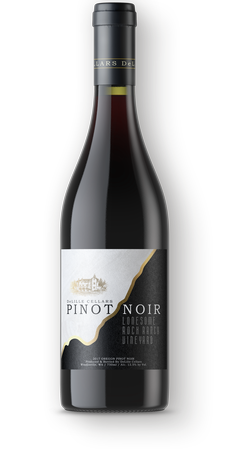
2017 Pinot Noir
WILLAMETTE VALLEY AVA
In the pursuit of continual improvement and experimentation in the cellar through winemaking techniques, vineyard sources, and wine styles, we have crafted our very first Pinot Noir with the 2017 vintage. Frequently considered the grail of the winemaker’s world, Pinot Noir is savagely difficult to cultivate in the vineyard and vinify in the cellar, with the best efforts resulting in wines of purity, ethereal presence, and an unparalleled sense of place. After years of consideration and desire by our Director of Winemaking, Jason Gorski, and through the relationship of our CEO, Tom Dugan, with De Ponte Cellars and the Baldwin family, serendipity struck.
The source of our grapes, Lonesome Rock Ranch Vineyard, is one of the westernmost vineyards of the Willamette Valley. The vineyard lays just outside the Yamhill-Carlton AVA, and was established by Scott and Rae Baldwin of De Ponte Cellars in 2007. The 6 acres of Pinot Noir are tucked in the foothills of the Coastal Range and planted with two clones, 667 and 777, in rocky Jory soil. The wine was made completely via gravity flow, with partial whole cluster and 100% whole berry fermentation before pressing into French oak to age, and has been bottled unfined and unfiltered. We are delighted to offer an extremely limited amount (150 cases) of our first effort to our wine club.
This is DeLille’s inaugural foray into the intimidating world of Pinot Noir. The light red appearance of this offering belies the complexity it has to offer, with a sensuous perfume of black cherry, cassis, earth, mint, and rose petals. Bright red fruit notes of cranberry and cherry intermingle with a multitude of spice box flavors including cinnamon stick, anise, and cloves. Hedonistic fruit is buoyed on plentiful acidity, with added intrigue and freshness from partial whole cluster fermentation.
The 2017 Pinot Noir label depicts an artistic rendition of the state line between Washington and Oregon, in a special ode to our friends and neighbors to the south. The gold line depicts the flow of the Columbia River which connects our two great wine regions.
